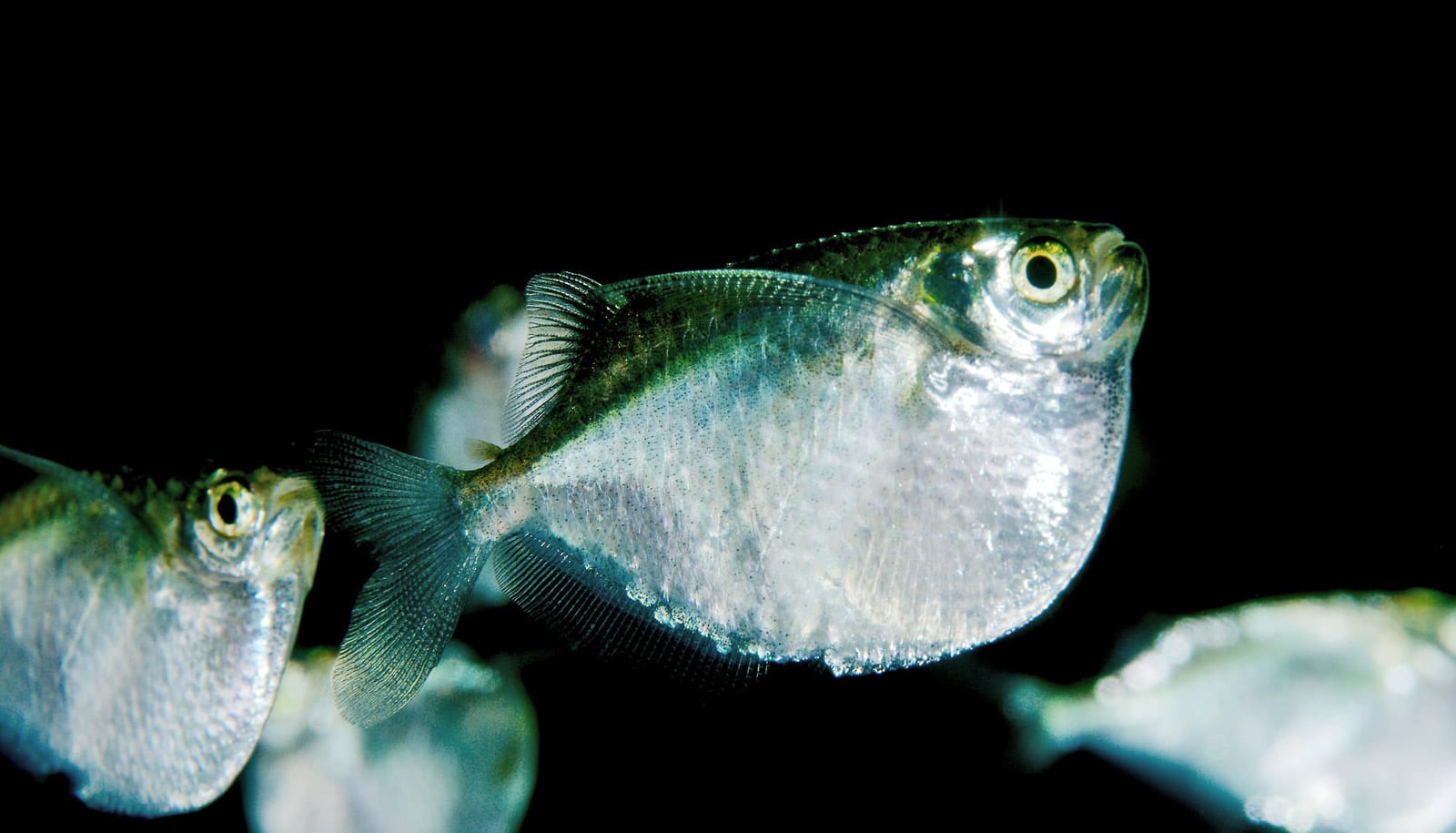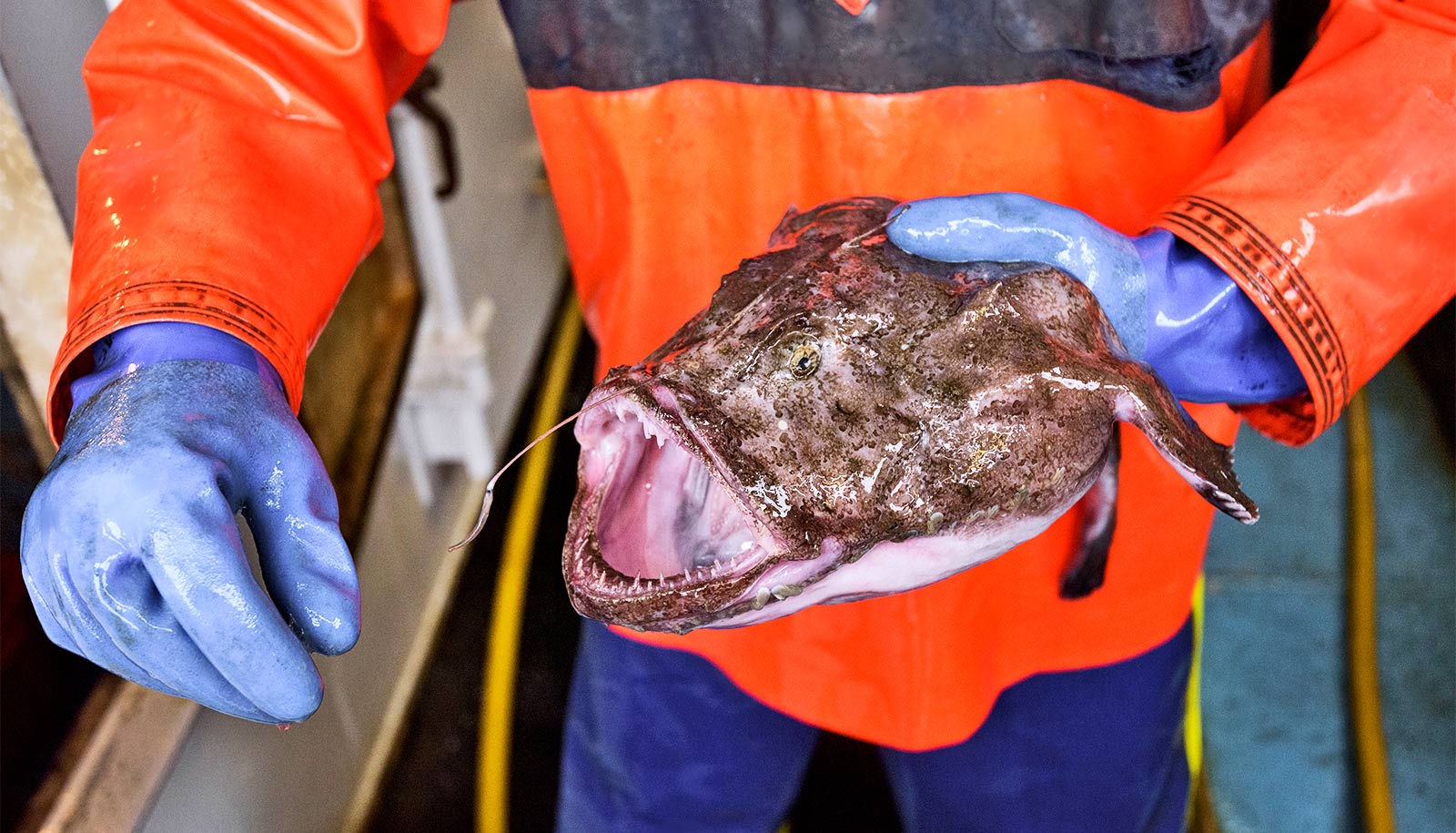New research shows how hatchetfish use light to hide. Contrary to previous ideas, they don’t do so by acting as mirrors.
The midwater region is the largest habitat by volume in the world, making up 99 percent of Earth’s livable space. It’s home to a myriad of occupants, many of which have evolved peculiar abilities to allow them to survive.
“They spend their whole lives sort of suspended in the middle,” says Alison Sweeney, assistant professor of physics and astronomy at the University of Pennsylvania. “Because they live in this three dimensional void, they have to deal with being potentially visible from every angle.
Hatchetfish are one of the “classic-example weirdo fish denizens of the midwater.”
“There’s literally nothing to hide behind and so they end up hiding within the light itself. The deep sea is a really amazing place to look for cool biological optics because so much of the ecology is driven by light.”
Hatchetfish, so named because the shape of their bodies resembles the blade of a hatchet, are, says Sweeney, one of the “classic-example weirdo fish denizens of the midwater.”
Because many deep-sea creatures hunt by looking up and seeing shadows or silhouettes, hatchetfish’s large flat bodies keep them relatively well hidden. Their skin is somewhat metallic-looking, resembling the dull side of aluminum foil.
Skin lets these fish do a vanishing act
Hatchetfish also have a line of photophores on their belly that produce light, or bioluminescence—useful when they’re swimming in waters shallow enough for sunlight to dominate. By producing their own light with the same intensity as the faint sunlight coming from above, the hatchetfish make themselves invisible to predators.
But this counter-illumination technique doesn’t work in the deep sea where sunlight doesn’t reach. Deep down, predatory sea creatures have evolved to create light with their own bodies, which they can use as searchlights to hunt for prey.
Until recently, scientists believed that hatchetfish were able to hide in the void because their reflective scales allowed them to behave like a mirror: light traveling towards the fish would bounce back at the same angle, matching the light coming from behind it and effectively cloaking the fish.
But researchers realized that acting like a mirror would actually make the fish more vulnerable in the deep sea: Light would be sent back to the predator, signaling the fish’s location.
So, researchers dug deeper into the hatchetfish’s mechanisms for camouflage and discovered they’re really not like mirrors at all. Rather than bounce light directly back, they scatter it in a diffuse, non-mirror like pattern that makes them much less visible to predators hunting with light.
Apparently oceans are filled with glowing fish
For the study, published in Royal Society Interface, researchers made optical measurements and did electron microscopy, shining a beam of electrons at the fish’s skin to create detailed images of its structures, which were more complex than they’d expected.
“We were expecting to find simple, quasi-one-dimensional stacks that were going to be sort of infinite along the outside of the body of the fish, and it was going to be easy to model,” Sweeney says. “Instead we saw these very complicated rice-grain like structures that were full of organized guanine crystals, or high-refractive index scattering elements. So we saw these very long, parallel bundled structures rather than these infinite flat platelets that we thought we were going to see.”
“It turns out that nature is generally quite a bit more sophisticated in how it has evolved to manipulate light.”
To determine how those long bundles were going to scatter, they used several optical modeling approaches, one of which involved modeling the structures using a supercomputer to determine what would happen if they bounced light off of it.
Rather than a specular, mirror-like scattering pattern one might expect from fish scales, the scattering was orthogonal to the long, skinny filaments as opposed to parallel.
“It gave us a more nuanced understanding of how these structures reflect light,” says undergraduate Eric Rosenthal, a study coauthor. “It’s interesting that hatchetfish have evolved such a complicated reflective structure, and how it is useful for camouflage.”
Further, when the researchers shined light directly onto the side of the fish, the structures they were studying actually piped the light through the fish’s body, funneling it downward through the photophores in its belly, sort of like a “beam dump.”
Because the habitat of hatchetfish seems to include both shallow parts of the ocean, where they can be seen in the dim, downwelling sunlight, and the deeper parts, where they are most vulnerable to searchlights, this mechanism may help their camouflage in two ways.
In the top zone where solar light dominates, hatchetfish may direct some of the sideways sunlight down through their photophores, which may assist in their counter-illumination. In the deeper part of their range where they’re vulnerable to searchlights, dumping the light downward will throw predators off their trail.
“It turns out that nature is generally quite a bit more sophisticated in how it has evolved to manipulate light,” Sweeney says. “In part this is because cells are fundamentally masterful at organizing things at length scales of tens to hundreds of nanometers, which is exactly the length scale that you need to operate at to manipulate light.”
By looking at the mechanisms by which biological materials control light, scientists may be inspired to use similar designs in technological applications.
“I think there’s a fundamental curiosity of basically just how sophisticated nature is in terms of photonics,” Sweeney says. “We want to know if we can we actually learn mechanisms from nature that we wouldn’t necessarily have gotten to through a top-down engineering approach. And the answer to that is yes.”
The National Science Foundation supported the work.
Source: University of Pennsylvania



